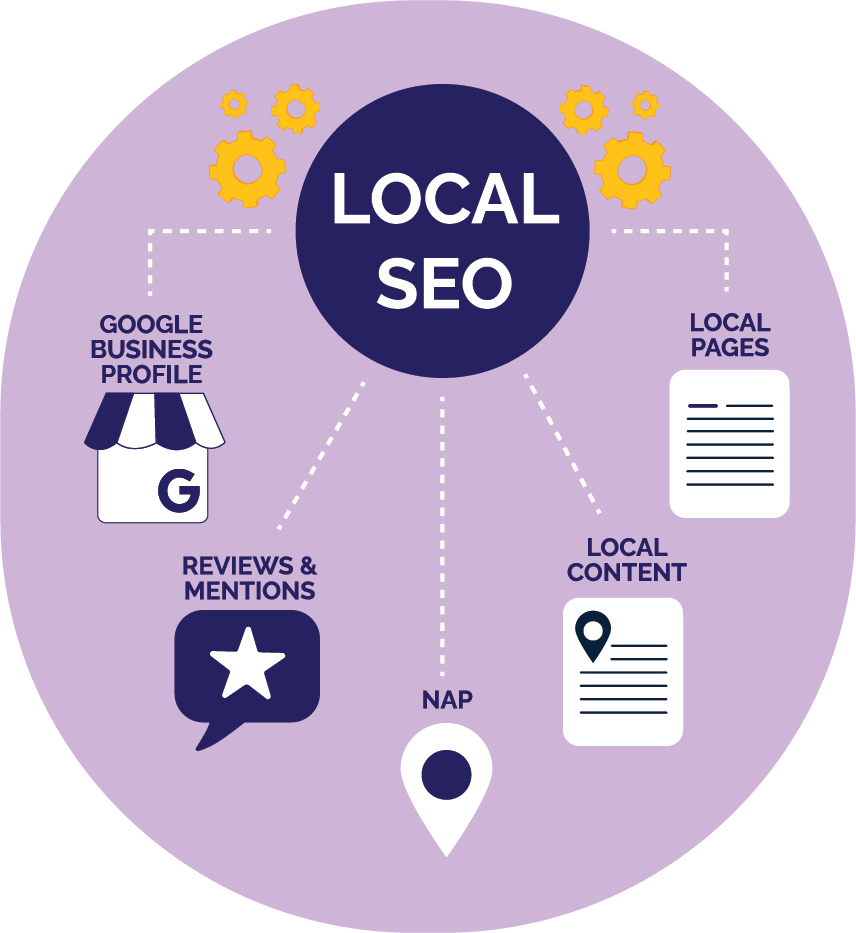Local SEO
Local SEO involves optimizing a website to enhance its local search visibility. This is specific for brick-and-mortar businesses and involves making sure the business is shown on Google Maps. Since 46% of all searches are for local business services and products, optimizing for local search results is critical for web presence. Techniques for achieving optimal local visibility include creating a strong Google My Business Profile, managing online reviews and mentions, NAP – name, address and phone number, implementing local pages on a website, and creating local content.
Guideline for Local SEO

Google My Business Profile (GMB) is crucial for local businesses to have a chance at being among the Local 3-Pack, local SERP, and Google Maps.
Online reviews and mentions play an important part in establishing authority and credibility for a business with an online presence. Users get to view local service and/or product reviews from fellow members of the community in a way aimed establishing trust in order to increase conversion rates.
NAP is an acronym that stands for name, address, and phone number. The NAP should be placed at the top of the home page and brightly colored so that it stands out.
Include a Local Page for a targeted location when there are multiple towns within a region where a business provides service.
Local content helps businesses drive more traffic to their website by connecting with their local audience and providing relevant content that builds trust and credibility within the community
The Local SEO Checklist
- Claim and Complete Your Google My Business Profile
• Make sure your business is claimed, verified, and all information is filled out accurately (name, address, phone, business hours, category, services)
• Upload clear photos and post updates or promotions. - Keep NAP Information Consistent Everywhere
• Use the exact same business name, address, and phone formats across all platforms – website, social media, directories, etc…
• Regularly audit your listings on Yelp, Bing, and niche-specific directories and sites to double-check NAP consistency. - Use Local Keywords Strategically
• Include your city or neighborhood with your primary service.
• Include location based terms to page titles, headers, meta descriptions, and image file names. - Apply On-Page Localization
• Mention your location naturally in body text.
• Add Local Business schema markup by placing Jason-LD code in the <head> section
of your websites HTML or use a schema markup plug-in. - Collect and Engage with Customer Reviews
• Ask satisfied customers to leave reviews on Google and other platforms.
• Promptly reply to reviews by thanking your customers for their positive reviews and addressing concerns constructively. - Create Targeted Location Pages (when applicable)
• Each location specified page should have its own geo-specific content, map embed, and contact info.
• Build a specific page for each location you serve. - Build Local Backlinks and Citations
• Submit your business to relevant local and niche directories.
• Network with the community through organizations, blogs, and chambers of commerce for community mentions and links. - Regularly Add Posts and Pictures to Google
• Share high-quality pictures of your team, products, services, and workspace.
• Post about specials, news, and events to keep your profile current. - Monitor Performance and Audit Regularly
• Use Google Business Insights, Search Console, and Analytics to track traffic and keyword performance.
• Audit your listing consistency and check link health every 3-6 months.
Continue to our Technical SEO page for guidance on improving user experience and site health.
